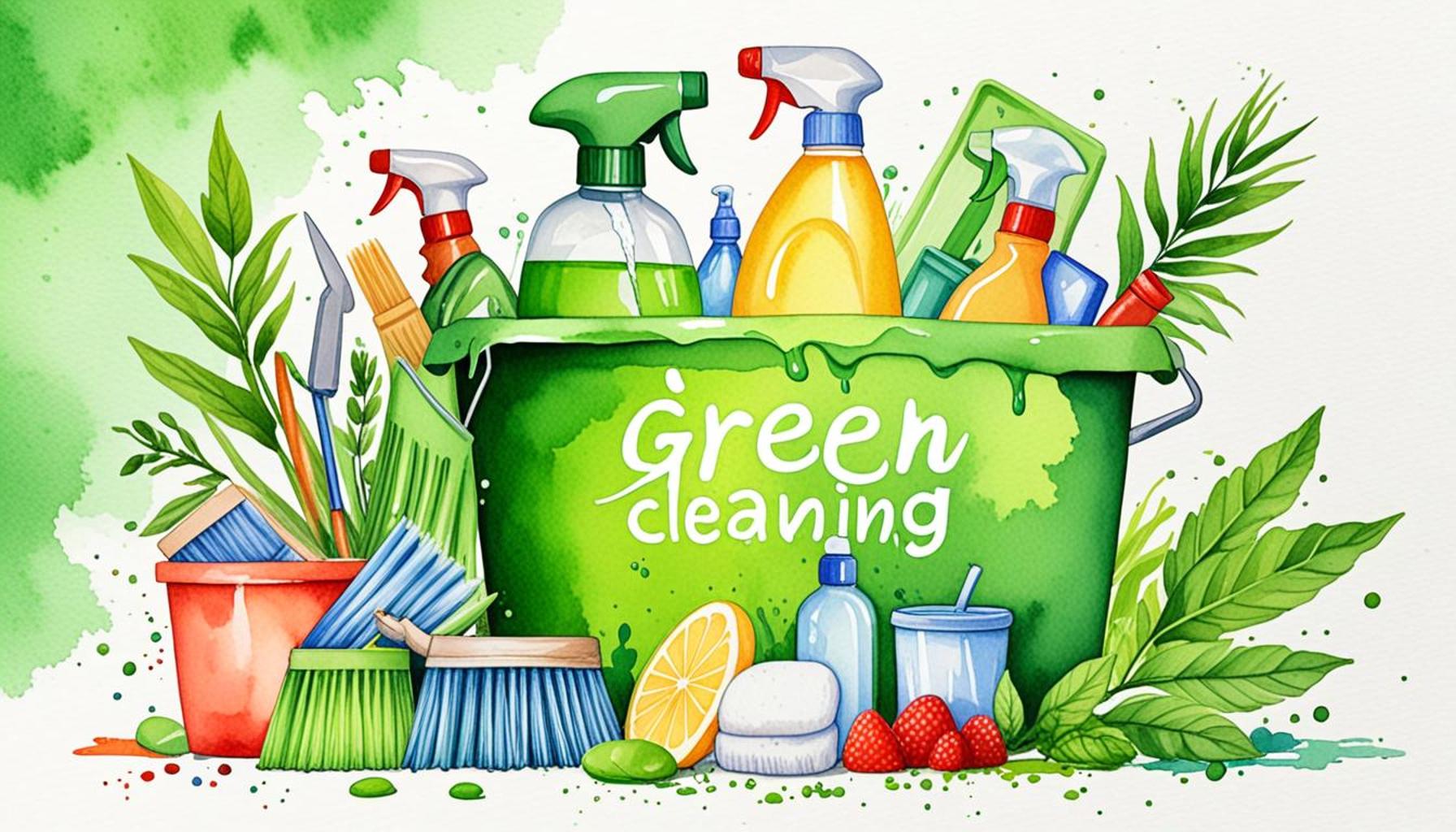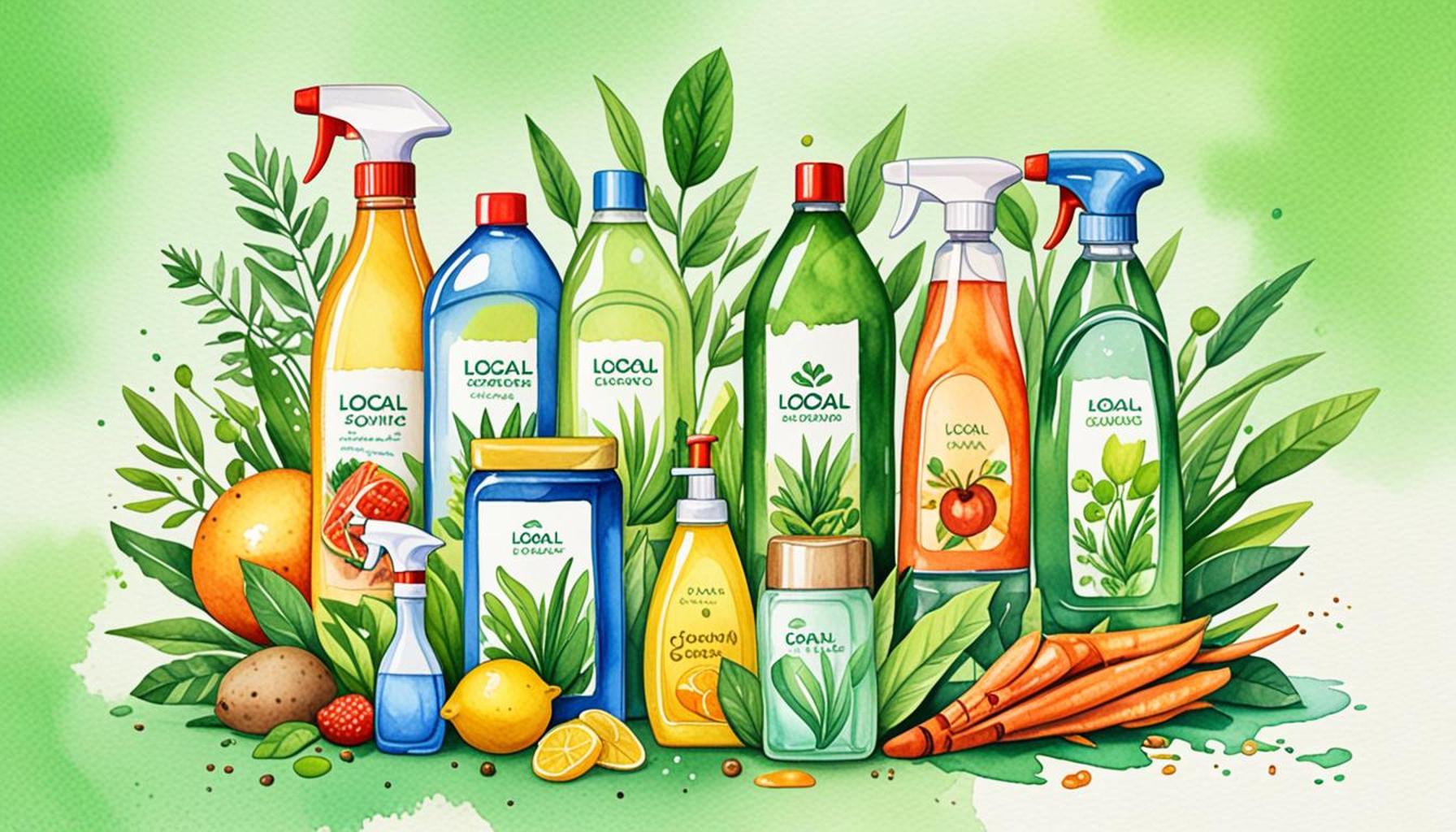Creating a Green Cleaning Routine: Integrating Eco-Friendly Products into Your Daily Life

Embrace Eco-Friendly Practices
As awareness of climate change and sustainability grows, the transition to green cleaning is becoming essential for individuals and families alike. Creating a green cleaning routine not only benefits our planet but also significantly enhances the health and safety of our homes. By making simple adjustments to your cleaning habits, you can achieve a cleaner living space while contributing positively to the environment.
Why Choose Eco-Friendly Products?
Transitioning to eco-friendly cleaning products offers various advantages that go beyond mere cleaning:
- Healthier Indoor Air Quality: Traditional cleaning products often contain harmful chemicals such as ammonia and phthalates that can release volatile organic compounds (VOCs) into the air. These substances can exacerbate allergies, respiratory issues, and even contribute to long-term health problems. By opting for green cleaners made from natural ingredients, you help ensure the air quality in your home remains pure and safe.
- Reduced Environmental Impact: Eco-friendly products usually employ biodegradable ingredients, which means they break down naturally without harming ecosystems. For instance, companies like Seventh Generation and Method focus on using plant-based formulas that do not pollute waterways or deplete the ozone layer.
- Safer for Families and Pets: Non-toxic formulas minimize risks associated with harsh chemicals, providing peace of mind for households with children and pets. Instead of worrying about accidental poisoning or skin irritations from conventional cleaners, families can choose safer alternatives such as vinegar, baking soda, or lemon juice—all effective in tackling grime while being gentle on sensitive skin.
Integrating these practices into your daily routine might seem overwhelming initially. However, it does not have to be complicated. Start by replacing common household cleaners with green alternatives that are equally effective. For example, consider swapping out bleach for a mixture of hydrogen peroxide and water, or using essential oils for fragrance instead of synthetic air fresheners. Such simple swaps can lead to noticeable improvements in both your home environment and overall well-being.
Getting Started
If you are ready to embrace a greener lifestyle, here are some quick steps to get you on your way:
- Audit your current cleaning supplies: Look for products containing harsh chemicals or unrecognizable ingredients.
- Research eco-friendly brands: There are many reputable companies that specialize in sustainable cleaning products, and some even offer refill stations for a zero-waste solution.
- Gradually replace conventional products: You don’t have to make all the changes at once. Start with one type of cleaner at a time, such as your all-purpose cleaner or bathroom disinfectant.
By joining the movement toward a cleaner, more sustainable future, you not only improve your personal health but also contribute positively to the environment. Making conscious choices about the products you use daily helps create spaces that are not just clean but also safe and eco-conscious. Together, we can foster a culture that emphasizes sustainability, ultimately paving the way for a healthier planet for future generations.

Essential Steps for Transitioning to Green Cleaning
As you embark on the journey of creating a green cleaning routine, it’s crucial to understand that change doesn’t have to be overwhelming. By taking deliberate steps, you can integrate eco-friendly products seamlessly into your daily life, ultimately fostering a healthier home environment. Here are some effective strategies to begin your transition:
1. Understand Your Cleaning Needs
Before you start replacing your conventional cleaning products, take some time to assess your cleaning habits. What tasks require the most cleaning effort? Whether it’s wiping down kitchen counters, scrubbing bathrooms, or keeping your floors pristine, identifying specific cleaning challenges allows you to focus on effective eco-friendly solutions tailored to your needs. This understanding serves as the foundation for building a green cleaning arsenal.
2. Opt for Multi-Purpose Solutions
One of the benefits of choosing eco-friendly products is the rise of multi-purpose cleaners that reduce the number of products cluttering your pantry while promoting sustainability. Look for products that can tackle a range of surfaces—kitchen counters, bathrooms, even glass—making your cleaning routine efficient and environmentally friendly. Brands like Mrs. Meyer’s Clean Day and Seventh Generation have created popular multi-surface cleaners using plant-derived ingredients that are both effective and safe.
3. DIY Cleaning Solutions
Another empowering aspect of green cleaning is the ability to create your own cleaning solutions using simple, natural ingredients. Not only can this save you money, but it also allows you control over the ingredients in your home. Some effective DIY solutions include:
- White Vinegar and Water: A potent solution for disinfecting surfaces and removing odors. It’s perfect for kitchens and bathrooms.
- Baking Soda: This versatile ingredient is great for scrubbing tough stains and freshening carpets. Mix it with water to create a paste for cleaning.
- Castile Soap: A biodegradable soap derived from plants that can clean almost any surface while remaining gentle. It’s excellent for laundry and dishes.
4. Educate Yourself on Ingredient Labels
To truly create a green cleaning routine, becoming familiar with product labels is essential. Many products tout themselves as “green” or “natural,” but it’s crucial to look beyond these terms. Check for certifications such as EPA Safer Choice or Green Seal, which indicate that the products meet rigorous health and environmental standards. Additionally, familiarize yourself with potentially harmful ingredients, such as chlorine bleach or fragrance, to avoid them in your purchases.
By implementing these steps, you can gradually shift toward a greener cleaning routine for your home. The journey might take time, but with commitment and conscientious choices, you will not only enhance your living space but also contribute to broader environmental efforts. Remember, creating a green cleaning routine is more than just a trend; it’s a step toward a sustainable lifestyle that prioritizes health, safety, and environmental stewardship.
| Advantage | Description |
|---|---|
| Environmental Impact | Utilizing eco-friendly products decreases harmful waste and lowers water pollution levels, fostering a healthier planet. |
| Health Benefits | These products often contain non-toxic ingredients, reducing respiratory issues and skin irritations commonly associated with harsh chemicals. |
| Cost-Effectiveness | While some eco-friendly products may have a higher upfront cost, they often lead to reduced medical bills and longer-lasting supplies. |
| Sustainability | Choosing sustainable products supports ethical companies, creating a cycle that promotes ongoing environmental responsibility. |
To build an effective routine focused on green cleaning, start by assessing commonly used products in your home. Seek out options with biodegradable packaging and refillable containers to minimize waste. Additionally, incorporating a selection of natural alternatives, such as vinegar, baking soda, and essential oils, can offer powerful cleaning solutions without the harmful side effects associated with traditional cleaners.Furthermore, establishing a cleaning schedule that utilizes these eco-friendly products allows for a consistent approach to maintaining cleanliness in your home. This routine not only creates a hygienic environment but also reinforces the importance of taking steps toward living sustainably.Integrating eco-friendly practices into your daily cleaning efforts fosters mindfulness, encouraging better habits that can extend beyond cleaning products. As more consumers become conscious of their choices, the demand for green cleaning solutions will continue to grow, making it essential for brands to innovate and develop products that are both effective and safe for the environment.
Incorporating Green Cleaning into Your Lifestyle
Transitioning to a green cleaning routine is not just about replacing products, but also about altering habits and mindset. By integrating eco-friendly practices into your daily life, you’ll reinforce sustainability in your cleaning regimen and promote a healthier environment. Here are some thoughtful ways to incorporate green cleaning into your everyday lifestyle:
5. Adopt a Cleaning Schedule
Creating a consistent cleaning schedule can help you prioritize eco-friendly habits over time. Designate specific days for certain tasks—like vacuuming, dusting, or deep-cleaning the bathroom. By mapping out your cleaning activities, you can ensure that you’re using appropriate green products at the right times. This strategy not only enforces your green cleaning efforts but also minimizes the potential for leftover chemicals to accumulate in your home environment.
6. Learn about Sustainable Brands
As you discover eco-friendly products, familiarize yourself with brands devoted to sustainability and ethical practices. Companies like Method and Ecover produce biodegradable cleaners from renewable resources while focusing on sustainable packaging. Research can go a long way—seeking out brands that utilize responsibly sourced ingredients and environmentally-friendly production methods enhances your green cleaning efforts. Additionally, supporting these companies contributes to a marketplace that prioritizes sustainability over profit.
7. Get Creative with Upcycling
Upcycling unused items in your home can also play a crucial role in creating a green cleaning routine. For example, repurposing old t-shirts or towels into rags can reduce waste and save money on disposable products. Similarly, glass jars can serve as storage for DIY cleaning solutions. This practice not only reduces the number of new products you buy but reinforces a mindset of reuse, encouraging creativity while being environmentally conscious.
8. Enlist Family Members
Engaging your family in the green cleaning process can transform it from a solitary task into a team effort. Encourage discussions about the importance of eco-friendly cleaning and involve children or other members in making homemade cleaning solutions. You could organize a “cleaning day” where everyone pitches in using green products. This not only educates others on sustainability but also instills a sense of responsibility and routine around keeping your home clean and eco-friendly.
9. Optimize Your Cleaning Techniques
Certain cleaning techniques can enhance the effectiveness of eco-friendly products. For example, using microfiber cloths can reduce the need for chemical-laden cleaners by effectively trapping dust and dirt. Furthermore, understanding the proper ratios and methods for using diluted vinegar or baking soda can maximize their cleaning power. Researching and refining your cleaning techniques can drastically elevate the effectiveness of your green routine.
10. Track Progress and Adjust
Lastly, as you integrate eco-friendly products and practices into your daily life, tracking your progress will enable continuous improvement. Keep a journal noting what works, what doesn’t, and any adjustments you may need to make. Join online communities or forums where individuals share tips and experiences related to green cleaning—these platforms can offer support, inspiration, and a wealth of knowledge that can help you refine your routine over time.
Incorporating these elements into your cleaning regimen not only contributes to a greener planet but also enhances your overall well-being. An effective green cleaning routine encourages a shift in priorities towards living sustainably and harmoniously with the environment. With each step you take in adopting these eco-friendly practices, you’re helping pave the way for a healthier future for both your home and our planet.
DIVE DEEPER: Click here to discover innovative cleaning solutions
Conclusion
Establishing a green cleaning routine is an empowering step towards a more sustainable lifestyle, and the journey begins with just a few mindful adjustments. By prioritizing eco-friendly products and practices, you not only contribute to a healthier home environment but also play a vital role in the collective effort to protect our planet. With the rising awareness of environmental issues, consumers are challenged to consider the impact of their choices—it’s a responsibility that can transform everyday tasks, such as cleaning, into meaningful contributions.
As you integrate sustainable cleaning products and effective techniques into your daily life, remember that progress often comes in small steps. Each switch to a biodegradable cleaner, each repurposed item, and each family member who joins the initiative enhances the impact of your efforts. Moreover, staying informed about emerging sustainable brands and innovative cleaning practices will keep your routine fresh and effective.
In the quest for a healthier, greener lifestyle, collaboration and creativity are key. Encourage dialogue within your household about the significance of eco-friendly choices, and keep an open mind to experimentation with various cleaning methods. As you track your successes and learn from setbacks, you’ll develop a personalized approach that resonates with your values and well-being.
Ultimately, creating a green cleaning routine is more than a trend; it’s an essential aspect of fostering a sustainable future. By embracing these eco-conscious habits today, you are investing in cleaner air, improved health, and the preservation of our precious environment for generations to come. Take the first step or continue on your current path—your choices matter.


